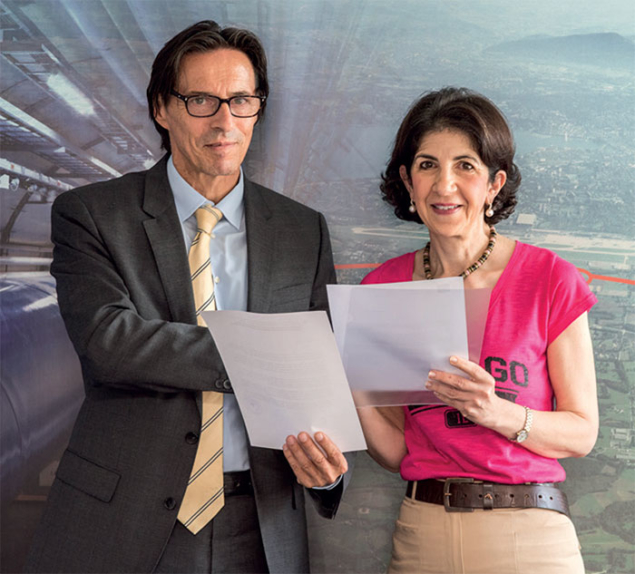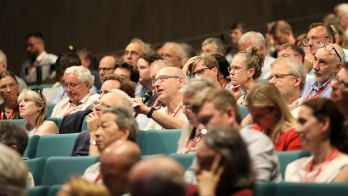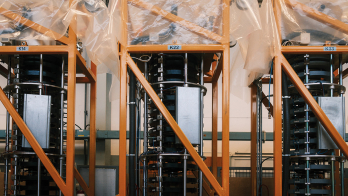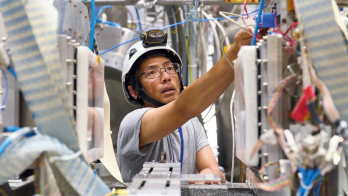
Image credit: S Bennett/CERN.
On 4 July, the Republic of Slovenia became an associate member of CERN in the pre-stage to membership. It follows official notification to CERN that Slovenia has completed internal approval procedures, entering into force an agreement signed in December 2016. “It is a great pleasure to welcome Slovenia into our ever-growing CERN family as an associate Member State in the pre-stage to membership,” said CERN Director-General Fabiola Gianotti. “This now moves CERN’s relationship with Slovenia to a higher level.”
Slovenian physicists contributed to CERN’s programme long before Slovenia became an independent state in 1991, participating in an experiment at LEAR (the Low Energy Antiproton Ring) and on the DELPHI experiment at CERN’s previous large accelerator, the Large Electron–Positron collider (LEP). In 1991, CERN and Slovenia concluded a co-operation agreement concerning the further development of scientific and technical co-operation in the research projects of CERN. In 2009, Slovenia applied to become a Member State of CERN. For the past 20 years, Slovenian physicists have participated in the ATLAS experiment at the Large Hadron Collider. Their focus has been on silicon tracking, protection devices and computing at the Slovenian TIER-2 data centre, and on the tracker upgrade, making use of the research reactor in Ljubljana for neutron irradiation studies.
“Sloveniaʼs membership in CERN will on the one hand facilitate, strengthen and broaden the participation and activities of Slovenian scientists (especially in the field of experimental physics), on the other it will bring full access of Slovenian industry to CERN orders, which will help to break through in demanding markets with products with a high degree of embedded knowledge,” said Maja Makovec Brenčič, Slovenian minister of education, science and sport.
Slovenia joins Cyprus and Serbia as an associate Member State in the pre-stage to membership. After a period of five years, the CERN Council will decide on the admission of Slovenia to full membership.







